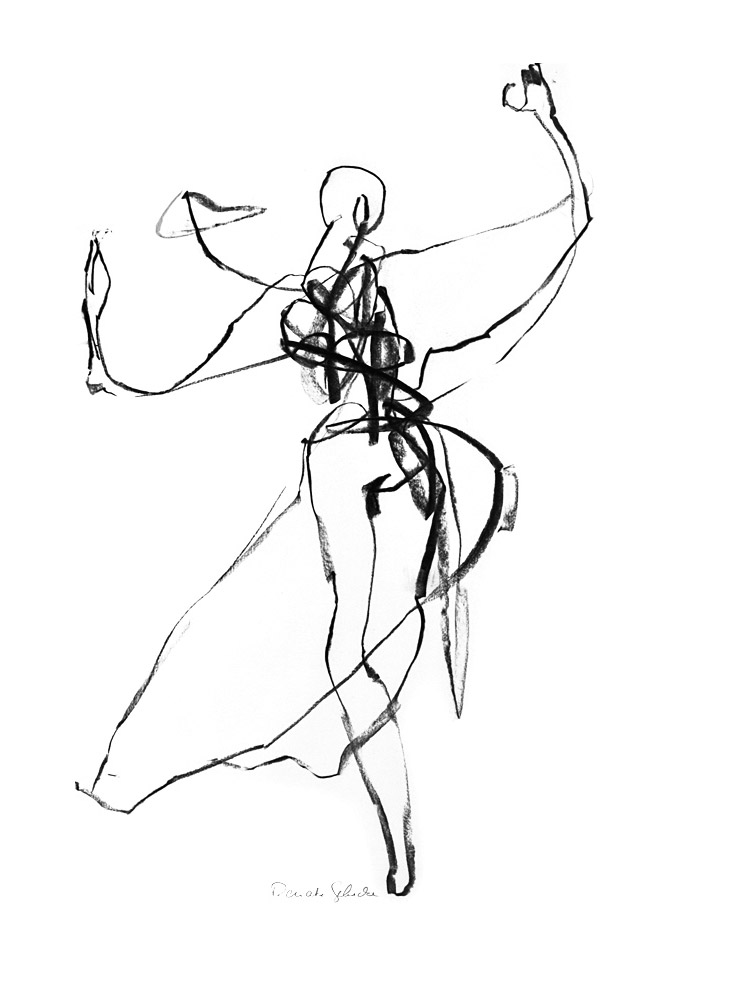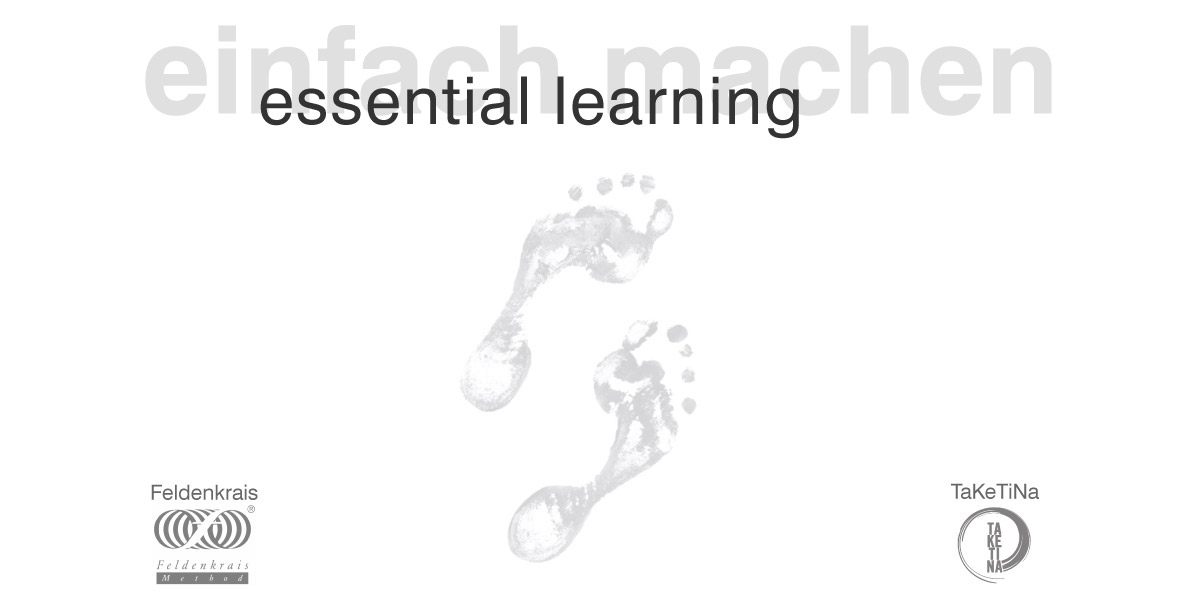Essential learning – just do it – make it simple
Sent by the senses, follow yearning as far as it encompassesR. M. Rilke
Whether working with Feldenkrais, TaKeTiNa rhythm or in personal consultation, the aim is always meticulous perception and differentiation, which subsequently allows a new integration of self-image onto a higher-than-normal plane. This applies to the treatment of physical complaints, like backache or stiff shoulders, as well as to providing new impulses in areas of high performance - in work with professional musicians, actors or others who are leaders in their field.
A gift or talent may not necessarily be something a person is good at, but it is always something that a person feels a deep longing for.* In order to bring this to fruition, we need to connect to our earliest and fastest stage of learning, one which was entirely sensual, embedded in movement and physical experience. This type of learning seeps into the essence of what is learnt, and touches the soul of the person who is learning. As a complex, multi-layered integration of all levels of experience it is learning in its fullest sense. Essential learning.* Cf. the writings of Barbara Sher.
Further training after early adolsecence is, in fact, confined to the acquisition of practical and professional knowledge in some field, and basic development is continued only by chance and in exceptional cases. Only the unsusual person will continue to improve his self-image until it more nearly approaches the potential ability inherent in each individual. Moshé Feldenkrais The teacher within – the opposite of the „nagger within“ – arises from the wisdom within each of us which supports all our learning and development processes. He is calm, persistent, humorous, and encourages curiosity about life. By encountering yourself through rhythm, TaKeTiNa can help you find your inner teacher. In this way the learner becomes independent of external determination and can learn from anyone he encounters.Reinhard Flatischler
 www.renate-gehrcke.de
www.renate-gehrcke.de
Simplicity and complexity
Learning which promotes development is not usually a linear progression from the simple to the difficult, but happens through steps forwards and backwards, through leaps and a constant change between phases of order and chaos, out of which, suddenly, new order develops.
This increase in complexity is the key to experiencing simplicity. An example: the construction of the first automobile, compared to modern-day car manufacture, was not at all complex, but using it was: you had to push the vehicle or crank up the motor before you could drive it. Nowadays using a car is so much easier because its internal organisation has become so much more complex. The same applies to guiding movement and rhythmic-musical competence.
If someone with a limp, someone with a complicated way of walking, asks me for help then I offer it mainly by refining and differentiating that person’s sense of self and his/her ability to guide and control his movements. If it is possible to make the organisation of movement more complex, then he can simply walk again. This is what is meant by the term“doing it simply“.
Learning in your own time – non-linear learning
All learning that enhances the development of personality happens at its own pace and not in accordance with an external given plan. It also doesn’t happen consistently in a linear way, but rather through progress and setbacks, with chaotic phases and times of standstill aswell as sudden leaps to a new level. Learning that is derived from experience and therefore brings about a lasting change needs its own individual time to be integrated into a whole personality. Any attempt from within or without to speed up this process, however well-meant that might be, will just slow it down. However in a situation where a person has time and space to develop in his own time, then amazing things can happen.
Learning in your own time is the most economic way of learning.... Usually one thinks: if I drop out, then I’m on the outside, cut-off, and if I want to join in again, then the others will be better than me and I won’t be able to catch up.... In the TaKeTiNa process, dropping out for a longer period of time is not only possible, it’s even effective. The rhythm of the steps stays the same over the whole period of time. This is like an open door which you can always go back through, even if the rhythm in the clapping and the voice have moved on. So in TaKeTiNa you learn in an environment which invites you to learn in your own time.Reinhard Flatischler
